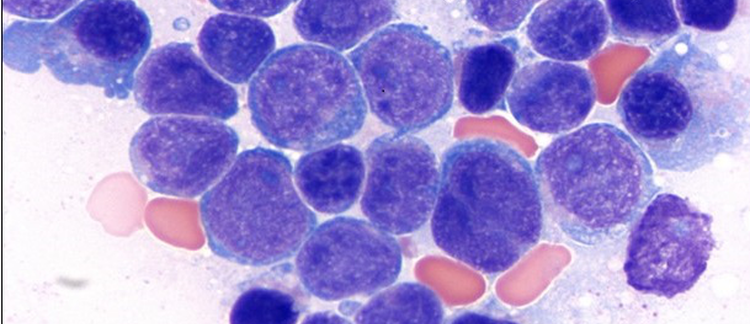HemeImage
Sulfasalazine-induced Myeloid Maturation Arrest
Ke Xu1,2*
1Department of Haematology; 2Specialist Integrated Haematology Malignancy Diagnostic Service, Health Services Laboratories, University College London Hospitals NHS Foundation Trust, University College London, London, UK.
*Correspondence:
Ke Xu, Department of Haematology, University College London Hospitals NHS Foundation Trust, 250 Euston Road, London NW1 2PG, UK. Phone: (+44) 02034567890, Email: Ke.xu @nhs.net.
A 51-year-old female presented with severe chest infection, haemoglobin 112 g/L, white blood cells 0.53 x109/L, neutrophils 0.02x109/L, platelets 310x109/L, PT 17.4 seconds, APTT 44 seconds. Blood film showed severe neutropenia and occasional blasts. Bone marrow smear (Figure 1) showed 10% blasts, 40% promyelocytes, 5% myelocyte, 0% metamyelocytes and neutrophils. Auer rods were not seen. Target fluorescence in situ hybridization (FISH) and molecular karyotyping showed no abnormalities including PML::RARA. Myeloid next-generation sequencing (NGS) (Oncomine Myeloid Assay GX v2) showed no pathogenic variants or gene fusions. The patient was treated with sulfasalazine for rheumatoid arthritis prior to admission. Sulfasalazine was stopped on admission and she was given broad spectrum antibiotics with recovery of blood count. This case highlighted that drug-induced myeloid maturation arrest with marked promyelocyte proliferation can mimic acute promyelocytic leukemia (APML) morphologically, which is a diagnostic challenge especially when patients also present with sepsis-related coagulopathy. Lack of Auer rods, absence of cytogenetics or molecular abnormalities and recovery of the blood count after stopping the offending drug support the diagnosis of drug-induced myeloid maturation arrest.

